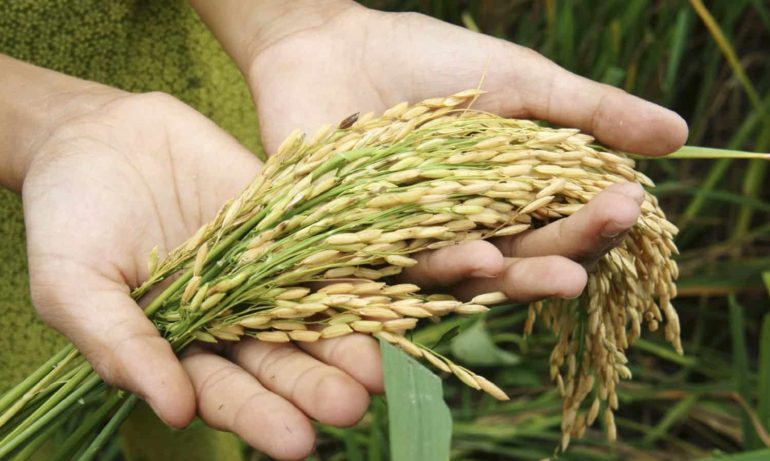Source: foodtank.com
Published: March 22, 2017

Norman Uphoff is a Professor of Government and International Agriculture at Cornell University and the Director of the Cornell Institute for Public Affairs. Uphoff’s work focuses on rural development and agricultural policy issues, and he is an expert and leader in the knowledge and research of the System of Rice Intensification (SRI). Recently, Food Tank had the opportunity to interview Norman Uphoff about recent updates with his work.
Food Tank (FT): What continues to inspire you to research rural development and agricultural policy issues?
Norman Uphoff (NU): My efforts include but go beyond research, because there is much knowledge already available to make improvements in agricultural productivity, food security, and climate resilience. We should be testing, adapting, and utilizing such knowledge—and developing more knowledge rather urgently—because meeting our food needs more adequately, more equitably, and more sustainably is not going to be possible with our current technologies and mindsets, given the growing constraints of climate change. What we are learning about the contributions that beneficial microbes can make to crop and animal (as well as human) growth and health is itself an inspiration and impetus for multidisciplinary, collaborative work on agricultural and rural development.
FT: Over time, how have you continued to see the impact of System of Rice Intensification (SRI) on family farmers, communities, and the environment?
NU: As the ideas and methods associated with SRI are extended and extrapolated to other crops (wheat, millet, sugarcane, teff, legumes, even some vegetables—mostly by innovative farmers), it becomes clearer that the insights and advantages deriving from SRI experience and evaluation are not a fluke. They add to the momentum of an agriculture which benefits farmers, consumers, and the environment, which can be broadly characterized as agroecological. I refer to this as re-biologizing agriculture: this makes agriculture less chemical-dependent, less focused on modifying genetic potentials, and more focused on utilizing biological processes and potentials, enabling crop plants to express more fully and productively the large potentials that they already have if they are growing in more favorable environments, above and below ground. Now crowded (not suffocated by standing water) in soil that is infused with life at all scales, from the invisible to the visible. SRI has directed our attention to the importance of roots’ healthy growth and functioning, and to the abundance, diversity, and activity of the soil biota. Both roots and the soil biota were ignored by the science and practice of the Green Revolution. SRI experience and research have re-educated us on the importance of these factors.
FT: Please share an example of a change you have you witnessed in communities where SRI has recently been implemented.
NU: Because there has been no funding made available to evaluate SRI impacts on a systematic basis, we have mostly anecdotal accounts to point to. But a systematic review done for the World Bank in the Indian state of Bihar, for example, found large increases in the productivity of rice, wheat, oil crops, legumes, and vegetables due to SRI practices and their application to other crops, as well as a whole host of socio-economic benefits. Over 100,0000 households, most among the poorest strata, were shown to be deriving multiple benefits from the new agricultural practices, especially as promoted through women’s self-help groups. SRI started with 128 farmers in 2007 and is probably over 1 million now, many of them using SWI (System of Wheat Intensification) methods for growing wheat in the winter season.
Evaluations of SWI methods by Indian scientists have documented a 30-percent yield advantage of SWI practices over currently recommended methods under normal climatic conditions, and a 46-percent yield advantage when the wheat crop is under adverse temperature and rainfall conditions. Such climate resilience has huge and beneficial implications for millions of households now subject to the vagaries of climate change.
FT: What is a current challenge you’re facing in your work with SRI?
NU: The understanding and acceptance of SRI among donors is increasing. In a recent publication on best practices for rice, wheat, and maize under its save and grow strategy, FAO focused on SRI as having many advantages over current practices and technology. Both the International Fund for Agricultural Development (IFAD) and the World Bank have endorsed its utilization. But still, there has been no funding to support the systematic documentation and promotion of SRI opportunities since our SRI-Rice Center was established at Cornell University in 2010 with a generous gift from Jim Carrey’s Better U Foundation. Many donor agencies and non-governmental organizations are now supporting SRI extension in their country activities, including the United States Agency for International Development (USAID). But, so far, the donor agencies and foundations have been missing in action in supporting systematic, science-based efforts to disseminate knowledge about SRI, its potentials, and its limitations.
FT: What have been the most valuable lessons learned since we last spoke to you in 2014?
NU: It is becoming ever-clearer that there was an enormous gap in knowledge and practice for the Green Revolution. It ignored and did not attend to the importance of root systems’ growth and functioning for plant growth, health, and resilience. And, it paid no attention to the contributions that beneficial soil organisms make to soil fertility and crop success, both in the rhizosphere and as symbiotic endophytes that live in plant tissues and cells. SRI has been educating us on the significance of these two factors affecting agricultural productivity.
FT: Looking ahead, how do you expect SRI to further develop and grow in the coming years?
NU: We see SRI and System of Crop Intensification (SCI), which applies SRI thinking to other crops as part of a larger and more important reorientation of agriculture, moving toward what is broadly characterized as agroecology. This includes Conservation Agriculture (CA), Integrated Pest Management (IPM), agroforestry, biofertilizers, and other biologically and ecologically based crop management. There are already some productive convergences of SRI and CA in Pakistan and China.
